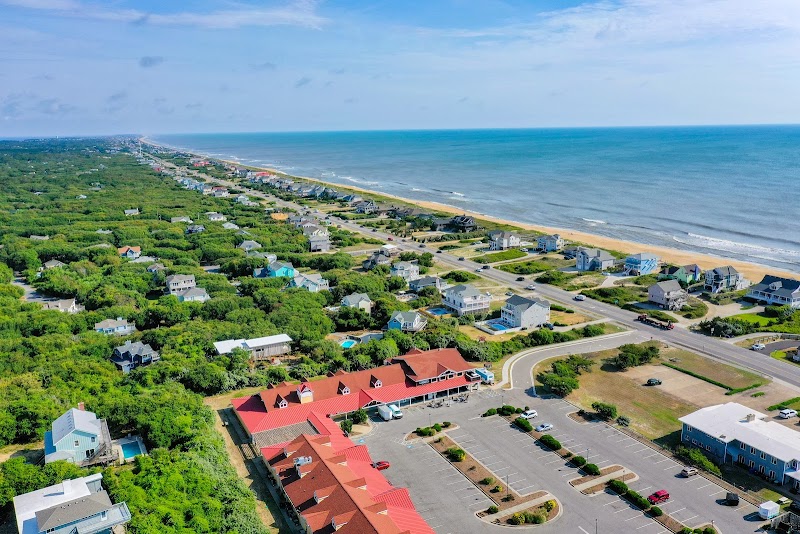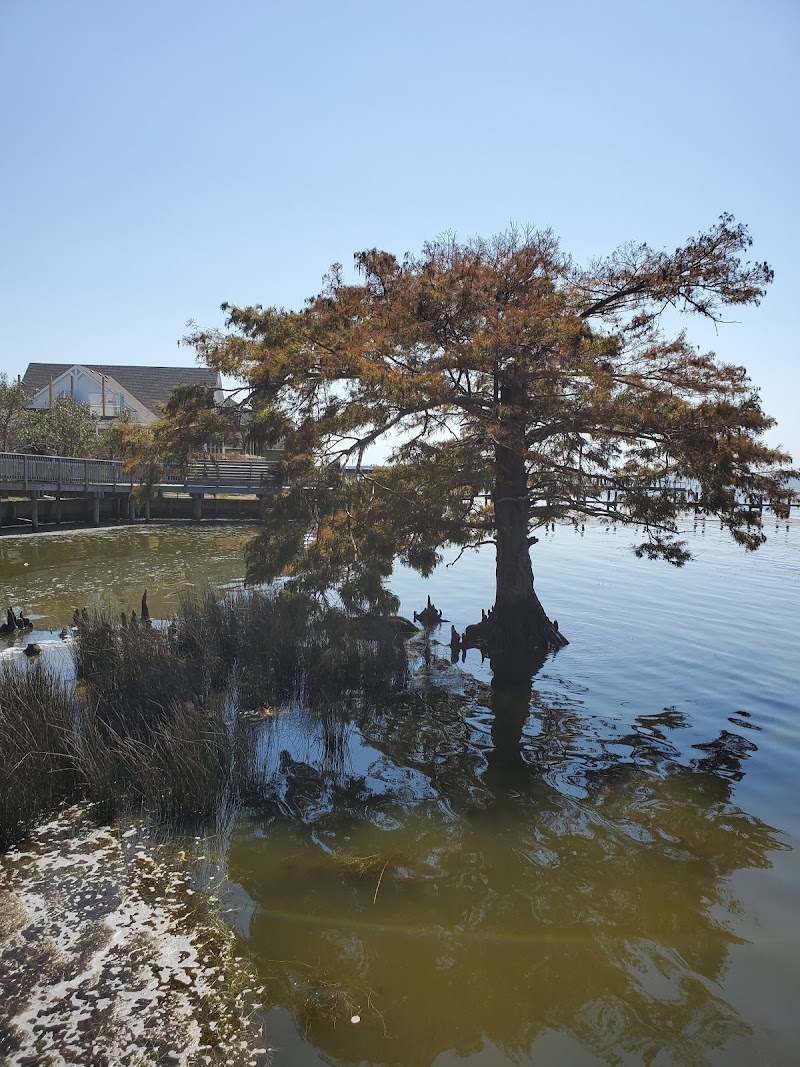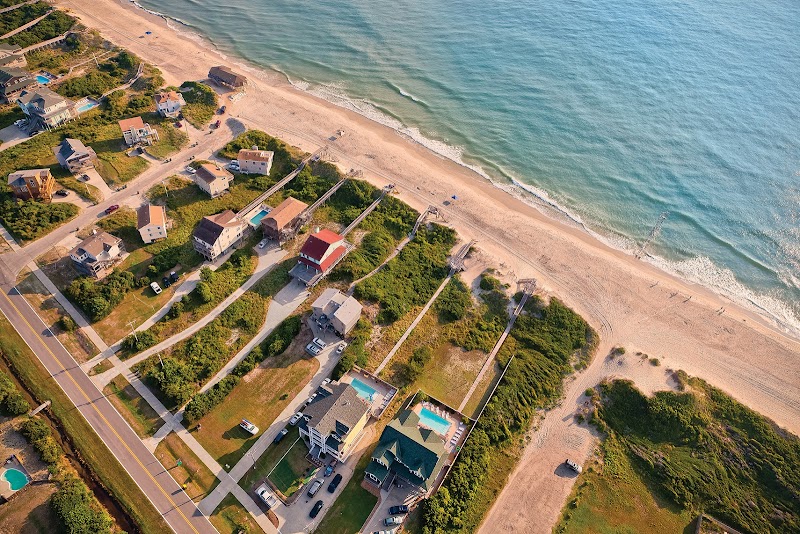Welcome to the Outer Banks
Envision a destination where over 100 miles of unspoiled shoreline meets the azure Atlantic. Welcome to the Outer Banks, North Carolina. Here, you can explore historical lighthouses, chase wild horses on the beach, and cherish priceless moments in nature's untouched beauty. This coastal paradise is a veritable treasure chest of unique experiences, waiting for you to discover.
As you embark on this adventure, we present to you a comprehensive tourist map of the Outer Banks. From pinpointing must-see attractions to charting out your journey, this map serves as an indispensable tool for your Outer Banks exploration. Let it guide your way as you uncover the magic and wonder of this exceptional destination.
" Booking.comExplore the Hidden Gems of Outer Banks
From undiscovered beaches to quaint historic villages, the Outer Banks is overflowing with hidden gems just waiting for your exploration. Beyond the wild horses and iconic lighthouses, you'll find a wealth of experiences that will etch your trip in your memory. Dive into the coastal allure of Cape Cod for a comparable journey across similar historically significant and serene landscapes.
Savour the Maritime Magic of Manteo
Nestled on Roanoke Island, Manteo is a charming waterfront village that harmoniously blends history, culture, and coastal beauty. It's home to the Elizabethan Gardens and the Roanoke Island Festival Park, where you can step back into history and delve into the area's rich maritime legacy. Don't miss the opportunity to observe the traditional boat building process at The Roanoke Island Maritime Museum.
Embark on an Adventure at Cape Hatteras National Seashore
The Cape Hatteras National Seashore is an oasis for outdoor enthusiasts. This 70-mile sprawl offers pristine beaches, towering sand dunes, and world-class surfing spots. More than just a beach destination, Cape Hatteras also showcases the power of nature with its dynamic landscape that continuously evolves with the winds and tides.
Unwind in the Tranquility of Ocracoke Island
Accessible only by ferry, Ocracoke Island offers a tranquil retreat from the humdrum of daily life. The island's quaint village is listed on the National Register of Historic Places and is an ideal spot to savour local seafood. For an extraordinary experience, stop by Springer's Point Preserve to explore the island's maritime forests and salt marshes.
Immerse in the Culture of Corolla
Historic Corolla Village is a cultural gem in Outer Banks, offering a glimpse into the area's past with its well-preserved 19th-century homes and the historic Whalehead Club. The village is the perfect place to unwind and soak in the picturesque coastal scenery. When you visit Corolla, you're not just seeing a place, you're stepping into a timeless slice of Outer Banks history.
A Journey Through Time and Space
Every corner of the Outer Banks narrates a story of natural beauty, historical significance, and enduring allure. By venturing beyond the beaten path, you'll uncover a side of this destination that few get to witness. Exploring a tourist map of the United States will offer you a broader perspective of where the Outer Banks' hidden gems are positioned in relation to other attractions in the country.
FAQs
Q: What else can I do in Outer Banks besides visiting the beach?
A: Outer Banks offers a myriad of experiences beyond its beautiful beaches. You can explore historic villages, visit maritime museums, go bird watching, take a scenic drive along the National Scenic Byway, or savour local cuisine.
Q: Is Outer Banks suitable for a family vacation?
A: Indeed! Outer Banks is a family-friendly destination with a plethora of activities for children and adults alike. From historical explorations to outdoor adventures, there's something for every family member.

Practical Information for Your Outer Banks Visit
Transportation and Mobility
Navigating the Outer Banks is best done by car, as public transportation is fairly limited and most attractions are spread out across the region. Local taxi services and ride-sharing options like Uber are available. For the more adventurous, renting a bicycle can be a delightful way to explore compact areas like Manteo or Ocracoke Island.
Schedules and Prices
Most attractions in the Outer Banks operate on a seasonal schedule, with extended hours during the summer months. For instance, lighthouse tours are typically available from April through October, with peak hours between 9 am and 5 pm. Prices for these tours range from $10 to $15 per person. Be sure to check the official websites for the most updated information.
When it comes to dining, expect to pay anywhere from $10 to $30 per person for a meal at a restaurant, depending on the location and type of cuisine. Seafood restaurants tend to be on the higher end of the price spectrum.
Safety Tips
The Outer Banks is generally a safe region, but it's always wise to stay alert, especially while swimming in the ocean. Rip currents can be strong, so always heed local warnings and never swim alone. When exploring remote areas or beaches, ensure you have a reliable means of communication, in case of emergencies.
Practical Recommendations
The optimal time to visit the Outer Banks is during the spring (April to early June) and fall (September to early November). The weather is agreeable, the beaches are less crowded, and accommodation rates are generally lower. Bear in mind, the Outer Banks is a popular summer vacation destination, so if you plan on visiting during this time, ensure to book your accommodations well in advance.
While exploring the Outer Banks, remember to carry plenty of water, sunscreen, insect repellent, and appropriate clothing. The region is home to a diverse array of wildlife and insects, so it's best to be prepared.

Frequently Asked Questions
1. What is the best time of year to visit Outer Banks?
While Outer Banks is a year-round destination, the peak season to visit is during the summer months, specifically from June to August. However, if you prefer to bask in the natural beauty with fewer crowds, the shoulder seasons of spring (April-May) and fall (September-October) are also great times to visit. Temperatures during these months are comfortable, and the weather is typically mild.
2. Are there any unique culinary experiences in Outer Banks?
Indeed, Outer Banks is a paradise for seafood lovers. One of the must-try dishes is the North Carolina-style barbecue, which features a vinegar-based marinade and often incorporates seafood. Also, the region is famous for its fresh catch, from shellfish to bluefish. Make sure not to miss the opportunity to visit local seafood markets or participate in a beach clam bake!
3. Is Outer Banks a good destination for bird watching?
Yes, certainly! Outer Banks is a sanctuary for bird watchers, with its multitude of bird species and diversity of habitats. Particularly notable are the Pea Island National Wildlife Refuge on Hatteras Island and the Alligator River National Wildlife Refuge, which are home to a variety of migratory birds and local species.
4. Are there any restrictions or rules I should know about when visiting the beaches of Outer Banks?
While the beaches of Outer Banks are generally open and accessible, there are certain rules and restrictions in place to safeguard the environment and the safety of visitors. For instance, it's crucial to respect the marked nesting areas of sea turtles and birds during the breeding season. Also, beach driving is permitted only with a permit and in designated areas.
5. Can I bring my pet to Outer Banks?
Yes, Outer Banks is quite pet-friendly. However, each town or beach area has its own rules regarding leashes and times when pets are allowed on the beach. It's crucial to review these rules before your visit. Always remember to clean up after your pet!
6. What water sports can I try in Outer Banks?
Water sports are a significant attraction in Outer Banks. From surfing and kiteboarding to kayaking and stand-up paddleboarding, there's an activity for everyone. The Pamlico Sound, in particular, is a popular spot for windsurfing and kiteboarding due to its flat water and steady winds. Don't forget to check out the Wild Coast for more thrilling water adventures!

